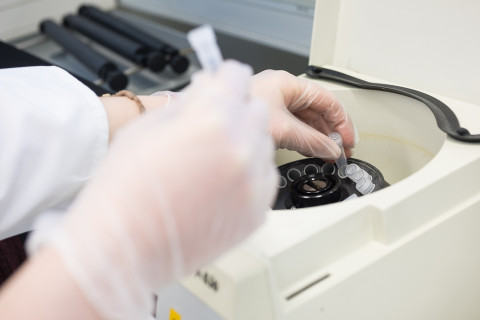Astrocytes and microglia might play divergent roles in C9orf72 repeat expansion-associated FTD and ALS.
A recent mini review takes a new approach on a gene mutation causing frontotemporal dementia (FTD) and amyotrophic lateral sclerosis (ALS). A common genetic cause of these diseases is a repeat expansion in the C9orf72 gene. Earlier studies have focused mainly on its impact on neurons, but now researchers aim to find out how it affects glial cells, such as astrocytes and microglia.
Glial cells, including astrocytes and microglia, are non-neuronal cells that play important roles in the maintenance of nervous system homeostasis as well as development and support of neurons. The interplay between glial cells and neurons is needed for the normal brain development and function. As glial cells constantly surveil their surroundings, they are capable of readily responding to different stimuli coming from their environment and thus also mediating pro- or anti-inflammatory functions. Recent studies have started to shed light on the molecular level mechanisms how glial cells might mediate and control neuroinflammation and neurotoxicity in the pathogenesis of different neurodegenerative diseases.
Frontotemporal dementia and ALS are part of the same disease spectrum
Whether and how glial cells might contribute to neurodegeneration in FTD or ALS are thus far not well understood. Interestingly, these two diseases, appearing to substantially differ in their etiology and pathological and clinical features at the first glimpse, have recently been shown to represent opposite ends of the same FTD/ALS disease spectrum. Many patients, in fact, show overlapping clinical symptoms as well as genetic background and pathological changes. One of the most important genetic causes shared by FTD and ALS is the abnormal expansion of a DNA sequence consisting of six nucleotides in the C9orf72 gene (C9-exp). C9-exp-associated FTD and ALS are especially common e.g. in Finnish patients, as almost half of the patients have been identified to carry this genetic alteration.
Glial cells may affect pathogenesis
The majority of recent studies have concentrated on elaborating pathological changes that take place in neurons of the C9-exp carriers. However, most animal and cell-based studies, which model the C9-exp-related pathological changes only in neurons, have failed to detect severe neurodegeneration, if any. This suggests that neuronal loss in C9-exp carriers is either triggered and/or enhanced by other cell types, such as astrocytes and microglia. Interestingly, microglia and astrocytes abundantly express the C9orf72 gene, but do not typically show similar molecular pathological alterations to neurons at least in the patient brain. Despite this, astrocytes of the C9-exp carriers in culture have been shown to mediate strong neurotoxicity through secreted factors without any additional triggering signals from their environment. In contrast, microglia appear to change their physiological activation state as soon as neurons start to show pathological changes. Whether this response by microglia is beneficial or detrimental to the neurons still needs to be investigated.
In the recent minireview published in Frontiers of Neuroscience, authors from the research group of Annakaisa Haapasalo at the A.I. Virtanen Institute for Molecular Sciences summarized the current literature and provided outlooks on the potential contribution of astrocytes and microglia to C9-exp-associated FTD and ALS pathogenesis. The main author of the paper, MSc Hannah Rostalski is an Early Stage Researcher at the GenomMed Doctoral Programme at UEF. This is the first review article based on published data from animal, cell culture, and patient-derived models and brain focusing on the impact of microglia and astrocytes and their functional and pathological features and neurotoxic mechanisms in the context of the C9-exp. Understanding glial contribution to the C9-exp-associated FTD and ALS is one of the central interests of the Haapasalo group and the main focus of the PhD project of Hannah Rostalski.
This publication is part of a project that has received funding from the European Union's Horizon 2020 research and innovation programme under the Marie Skłodowska-Curie grant agreement No 740264.The open access article:
Hannah Rostalski, Stina Leskelä, Nadine Huber, Kasper Katisko, Antti Cajanus, Eino Solje, Mikael Marttinen, Teemu Natunen, Anne M. Remes, Mikko Hiltunen and Annakaisa Haapasalo. Astrocytes and Microglia as Potential Contributors to the Pathogenesis of C9orf72 Repeat Expansion-Associated FTLD and ALS. Front. Neurosci., 15 May 2019 | https://doi.org/10.3389/fnins.2019.00486. Submitted on 28.02.2019, Accepted on 29.04.2019
More information:
Hannah Rostalski, A.I. Virtanen Institute for Molecular Sciences, University of Eastern Finland, hannah.rostalski(at)uef.fi
Annakaisa Haapasalo, A.I. Virtanen Institute for Molecular Sciences, University of Eastern Finland, annakaisa.haapasalo(at)uef.fi
